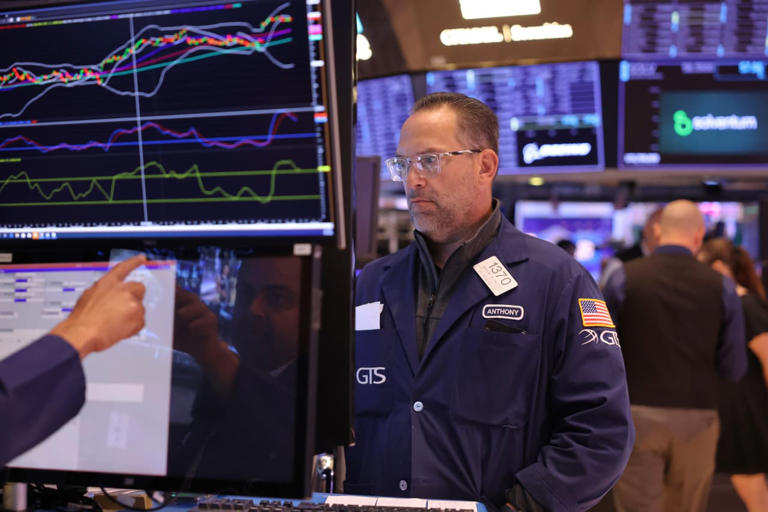The significant rise in the S&P 500’s price-to-earnings (P/E) ratio over a brief period reflects a convergence of market dynamics and investor behaviors. Investors, like our metaphorical “average Joe,” are now willing to pay substantially more for future profits. Six months ago, Joe might have paid $5 for a dollar of future profits from the S&P 500, but today, he’s ready to pay considerably more. This shift captures the essence of what’s happening in the stock market.
As of last week, investors are paying 20.57 times for each share of the S&P 500’s projected profits over the next year, marking a 3.4 point increase in the index’s valuation from its October market low. This kind of surge in the P/E ratio is rare; it has occurred only 5% of the time in the past three decades, as noted by renowned strategist David Rosenberg.
Corporate earnings have also shown a slight increase. In 2024, the S&P 500 is estimated to earn $243.33 per share, a modest increase from earlier projections. However, this slight increase in earnings does not fully explain the significant rise in the P/E ratio. The surge in valuation suggests that other factors are at play beyond just earnings growth.
One major factor is liquidity. There is a considerable amount of money available for investment, which helps drive up valuations. Money-market fund balances, a common measure of available cash, totaled $6 trillion for the first time in February, and this value remains above this record as of the week ended May 29. This sidelined money, typically invested in short-term debt instruments like Treasury bills, can be quickly moved into equities, creating a feedback loop that pushes stock prices higher. Other liquidity indicators also show a healthy level of money in the system. For instance, the overnight reverse repurchase facility, where institutions park excess cash to earn interest from the Federal Reserve, holds $440 billion. The M2 money supply, a broad measure of money in the economy, stands at $21 trillion.
The increase in liquidity implies that investors have more capacity to take risks. Much of the S&P 500’s valuation increase is driven by investors bidding up technology stocks, fueled by optimism surrounding artificial intelligence. The so-called “Magnificent Seven” stocks—Nvidia, Apple, Amazon.com, Microsoft, Google parent Alphabet, Tesla, and Meta Platforms—are trading at 30.71 times their projected earnings over the next 12 months. Their combined P/E ratio has increased by 3.8 points since October’s low and is above its 10-year average, indicating that a significant portion of the S&P 500’s high valuation is due to these tech stocks.
Further evidence of this concentration in tech stocks can be seen by examining the S&P 500 Equal-weight index, which gives equal importance to each stock included. As of Friday, this index is trading at 16.31 times its projected earnings for the next 12 months. While this is an increase from October, it matches the 10-year average, suggesting a normalization in the valuation of a broad range of companies.
Market momentum also plays a crucial role. Investors are staying in the market longer than they might otherwise due to the S&P 500 chasing one high after another. In the first half of the year, the index closed at a record level 24 times. When few people are willing to sell, buyers must pay higher prices for a dollar of profits to attract sellers, further driving up valuations.
However, this exuberance doesn’t always align with logic. David Rosenberg has noted that the stock market has been driven more by animal spirits, sentiment, and speculation rather than economic fundamentals. This “irrational exuberance,” a term popularized by economist Alan Greenspan, implies that equities are overvalued and at risk of correction. If inflation runs too high or if the profits from AI companies start to disappoint, the market could face a significant pullback.
Despite these concerns, some strategists have raised their price targets for the S&P 500, yielding to the market’s bullish spirit to avoid being wrong. Morgan Stanley’s Mike Wilson, for example, raised his 12-month target to 5400 points from 4500, even though he acknowledges the difficulty in forecasting the P/E ratio and believes valuations are too high.
In summary, the stock market’s high valuations are driven by increased liquidity, concentrated gains in technology stocks, and a feedback loop of investor sentiment and momentum. While these factors have pushed prices to new heights, they also introduce the risk of a potential market correction if economic conditions change or if corporate earnings from highly anticipated sectors like AI do not meet expectations.
